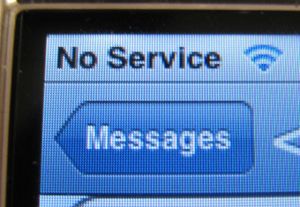While I didn't really have a need for a GPS watch (I'd been running using RunKeeper Pro on my iPhone), I was intrigued by the idea of zone training. Zone training is just a fancy phrase some Russian exercise physiologist came up with during the Cold War to describe using your heartbeat as a pace setting tool.
(And just in case you were wondering, no, you did not just time-warp to the 80s, and I have no plans to start marathon training in a neon-colored Adidas track suit.)
There were a few things that peaked my curiosity about zone training:
- I've heard several times that you can determine how "in shape" you are by your resting heart rate. Naturally, I wanted to find out what mine was.
- I had been struggling on some long runs lately, and I wanted to see if I could find an explanation. Was I exceeding my target heart rate (HR) during the run? Not pushing myself hard enough?
- RunKeeper Pro has the ability to add your average HR to your workout logs, and I'd been approximating for the last few months during runs. This was *way* too unscientific for me.
- CrossFit (the workout regiment I do outside of running) really pushes my cardiovascular capabilities, and I was curious in a) the number of calories I was actually burning during the workouts and b) what range my HR was in for the 15-30 minute sessions.
 So I picked up the Polar RS100 on Amazon for roughly $80 (about $20 less than it retails for). It's their low-end monitor, but has the capability of recording up to 99 laps, is water-resistant and uses a chest-strap monitor that communicates with the watch. This was critical especially for CrossFit, where I didn't want to have to stop my workout to get a quick reading.
So I picked up the Polar RS100 on Amazon for roughly $80 (about $20 less than it retails for). It's their low-end monitor, but has the capability of recording up to 99 laps, is water-resistant and uses a chest-strap monitor that communicates with the watch. This was critical especially for CrossFit, where I didn't want to have to stop my workout to get a quick reading.The chest strap doesn't bother me as much as I thought it would; when I first picked it up I worried it would restrict my breathing and cause me to cramp. It's actually quite comfortable and made from a soft, flexible, plastic-y type material with a neoprene hook-and-latch to go around my back. It's also machine washable (critical when you sweat as much as I do).
Since using it, I've learned a few valuable lessons I want to share with you:
- I had no idea how many calories I was actually burning while running. This was the most surprising lesson learned, as RunKeeper Pro (which automatically calculates your calories burned using a time / distance algorithm) was *grossly* underestimating how much fuel I was using. In some cases I was actually burning TWICE the calories RunKeeper said I was. (12 mile run: Polar, 2,134 calories; RunKeeper, 1,024 calories)
- With that in mind, I realized part of the reason I was struggling so much during the long runs was because I didn't have the fuel I needed. I'd get up first-thing in the morning without eating anything, and was relying on my glycogen stores (essentially, how much energy I could store up / carry over from the previous days) which rapidly depleted. I've started to eat a small something before running and am intentionally consuming more energy gels, electrolyte-loaded liquids and thinking more proactively about the types of foods I consume before I run.
- I was exceeding my target zone routinely by about 2-3 percent. Last week I tried to cap my HR at 85 percent, and noticed a positive difference in how I felt after mile 10. I still think 85 is low for me, so I'll be toying with 87-88 percent to see if I can still feel the same difference at that level.
- I'm not as "in shape" as I thought I was, or, I have a better sense of a good target to shoot for. Right now my resting HR is around 68 BPM. My goal is to have my resting HR be closer to 60; this would mean my heart is more efficient at distributing oxygen to the bloodstream and, therefore, needs to beat less frequently.
- Indeed, I am a nerd. It's just neat to be able to break down the metrics of your run; I really appreciate being able to analyze (with data) my progress, issues and trends.
Happy running and have a joy-filled day,
S





